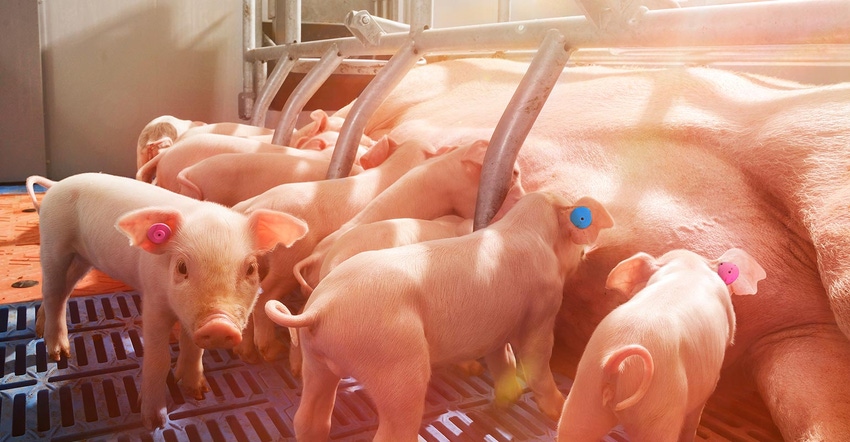Want to maximize lactating sow feed intake? Put her in control
Automated farrowing feeding lets you and your sows drive feed intake and productivity.
December 1, 2019

Sponsored Content
By Rich Lepper, Nedap Livestock Management
Ad libitum feeding is the most common way to feed lactating sows, but it isn't perfect. The sow determines meal size. And, feed may become stale fast, which can impact how much a sow eats. In fact, the freshness and palatability of feed is a key driver of lactating sow feed intake and sow productivity.[1]
An automated farrowing feeding system can solve the challenge by giving sows access to fresh feed 24/7. Snack-sized portions of fresh feed are delivered on a pre-set schedule. Meanwhile, sows can "ask" for additional portions of fresh feed at any time by triggering an optional wireless activator in the feeder.
How does this increase feed consumption? First, increasing feeding frequency has been shown to stimulate appetite and increase overall feed intake.[2] Second, replacing stale feed in the feeder with a fresh ration keeps sows coming back for more. You get better sow and piglet performance and better return on investment.
Gain control to maximize feed intake
Automated farrowing feeding enables you to adjust feed plans to meet individual sow needs from anywhere using a smartphone, tablet or computer. You can change portion sizes, delivery rate and frequency. And, with the optional activator add-on, your sow can ask for fresh feed day or night.
By giving you control and insights to maximize feed intake, automated farrowing feeding can help sows maintain body condition, prepare for rebreeding, and produce enough milk to wean heavier pigs.[3]
Monitor sow feed intake 24/7
Automated farrowing feeding gathers real-time data and monitors sow feed intake around the clock, so when a sow's eating activity drops, you'll know faster. This can help identify sick sows or feed quality issues that can impact feed intake, milk production and body condition before visual symptoms appear.
When no feeder activity is detected for a predetermined amount of time, the farrowing feeding system sends an automated alert that a sow's feed intake has dropped, and she could need attention. Producers can adjust feed plans accordingly, or call a veterinarian if needed, to intervene before it becomes a larger issue.
Power pig performance with a single change
More frequent feeding seems like a small change, but it's one that can have a big impact. Better feed intake boosts milk production. More milk for the sow's litter can mean healthy, fast-growing pigs. And, increased feed intake can positively impact sow body condition score for longer-term performance.2
If a single change — feeding frequency — can power sow and pig performance now and in future performance phases, what's holding you back?
Visit farrowingfeeding.nedap-livestockmanagement.com to learn more about Nedap Farrowing Feeding.
[1] https://www.ncbi.nlm.nih.gov/pmc/articles/PMC5382409/
[2] https://www.ncbi.nlm.nih.gov/pubmed/30246330
[3] https://www.ncbi.nlm.nih.gov/pmc/articles/PMC5382409/
About the Author(s)
You May Also Like



